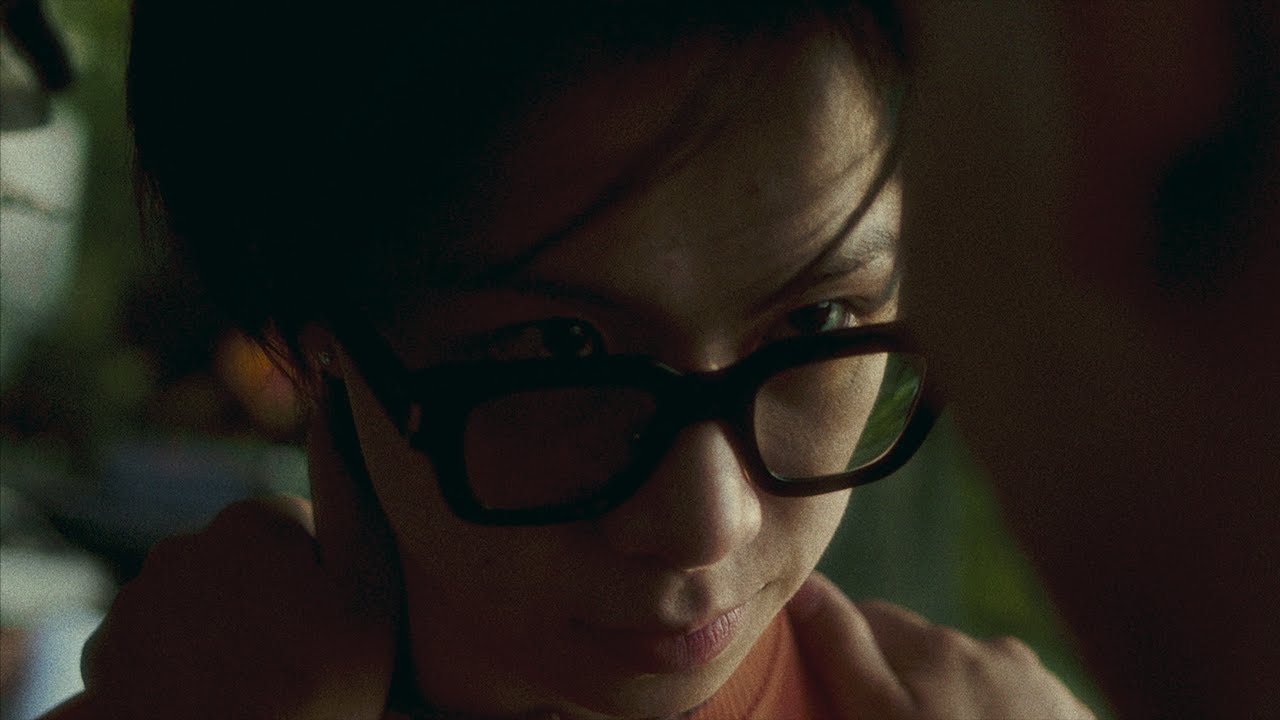Photos by Gillian Garcia
“It’s a big statement,” says Jasper Marsalis, aka Slauson Malone 1, “but I feel like it’s a failure of the artist if the work can’t speak for itself.” We’re meeting over Zoom, Marsalis taking time between tour dates in America, to discuss his extraordinary new record Excelsior. The interview process is something that, by Marsalis’ own admission, he finds a bit tricky. “There isn’t a sense of give in the conversation,” he says.
That isn’t to say that Marsalis isn’t good company, nor even that he’s not a good interviewee. He’s thoughtful, attentive and good-humoured on topics as diverse as hurdy-gurdys, Joe Meek and The Fast And The Furious, yet when it comes to his own work he tends to broaden the conversation to discuss wider concepts, rather than focus too long on the finer details. There are autobiographical themes that he hints at – a fading love narrated through the imagery of radioactive half-lives; a song written to his mother from the perspective of an unborn baby in the womb – but he’s clearly wary of attaching too much emphasis on them.
We speak, for example, about the role submission plays in his writing. ‘New Joy’, a brilliant and constantly shapeshifting song, was written while Marsalis was imagining submission as a “position of strength and power.” When pressed, however, he expands his scope to speak about wider ideas of music consumption. “I feel like the act of listening to music is a very submissive position to be in. For 42 minutes you’re being asked to commit to something else, and I find that to be very empowering.” Then, again, focus switches to algorithms, and how on the song ‘Fission For Drums, Piano And Voice’, he used a computer to create “an exponential growth of notes” that plays until it reaches a scope that the system can no longer play them. “I guess I had to fully submit to what the computer would spit out and be OK with it, and that felt really nice. I don’t know if that answers your question, though.”
By this point, what exactly the question even was is long forgotten. Yet the nature of our conversation, flowing back and forth between the micro and macro scale, constantly shifting between pathways, is somewhat fitting given the nature of Excelsior, a record that’s success is down to the way it sprawls in every direction, travelling both inwards and outward. At times it’s as tightly crafted and as thrilling as music can be, structured around two distinct movements. “I go in with extreme intention,” Marsalis points out. At others its deliberately lackadaisical and plodding, departing that framework as it drifts into something shapeless. It weaves scientific images with the fantastical, settles into grooves but then abruptly interrupts them just as they start to become comfortable.
If Marsalis’ judge of success is whether his art can speak for itself, then Excelsior is a success. What exactly it ‘says’, however, is the listener’s to decide. “I like to listen to people more than I like to talk to people about what I’m doing,” Marsalis says. “It feels a bit ‘Blah blah blah, listen to me.’ But I’m also happy to make myself accessible to people. A critique I’ve heard is that people think [my work] is elusive and hard to understand, but to me it doesn’t feel that way. To me it feels very dumb. So to bridge that gap, I think, is really important.”
The title Excelsior refers to the idea of a metaphorical sword that gets bigger every time it’s swung, until it’s so large it splits the earth in two. Where did that image come to you?
Jasper Marsalis, Slauson Malone 1: It’s the New York State Motto. I used to live in New York, you’d walk around every day and see this benign word, ‘Excelsior’, on all the license plates. I think it was a word that just got kind of stuck in my mind. I moved to London for 6 months last year and I got obsessed with castle technology and how awful a quality of life it was. I heard something about how there was no insulation, so it was always freezing, and they had to put hay down because they didn’t have proper cleaning methods, so there were piles of shit everywhere. ‘Excelsior’ felt like this antiquated word left over from that time period. So, I think that’s where the beginnings of it started.
When did the idea turn into that fantastical image of the sword?
JM: I think it was when I started working on the Joe Meek cover, ‘I Hear A New World’. I started to think about certain instruments and how they evoke certain cultural feelings. I think that’s when it started to really formalise and become very cinematic.

Tell me more about that Joe Meek cover, it’s also kind of a ludicrous song with those high pitched alien vocals.
JM: Initially I was giving up on music, ready to stop, then my friend played me that song. There were so many technical questions I had when I was listening to it. I was figuring out how to get that strange sense of time and feeling with the harpsichord; it’s a very unsettling experience. I was also listening to a lot of SOPHIE, who used a lot of Supersaws and JD-800 synths, that kind of trancey rave. It was really fascinating combining a harpsichord and a rave song, these two instruments that evoke a sense of futuristicness, but were created in very different circumstances and time periods.
There’s a lot of juxtaposition on this album, it’s got that fantastical element of ‘Excelsior’, but is also laden with scientific imagery, particularly of fission and atomic physics.
JM: And it’s bookended by boredom. I always think about that Tarkovsky film, Solaris. It’s just so unrelentingly boring. You’re forced to deal with your own sense of time, and expectations of what you wanna see in a sci-fi thriller movie. That’s something I’ve really been thinking about. Combining fantastic, overwhelming, extreme sonics but also this ‘nothing’, a moment of very boring sounds.
The opening track ‘The Weather’, is almost just a free association of disconnected words that half-rhyme with each other.
JM: I wanted to prepare people. It’s like, ‘If you can’t sit through this you probably shouldn’t listen to the rest of the record.’ But that song, to me, is kind of… have you ever seen The Fast And The Furious movies? They always end on a cliffhanger, and then in the next movie they have to recap what happened. To me ‘The Weather’ is a recapping of what was happening in the prior record. Then on [the next track] ‘House Music’, it’s ‘This is music, now we’re gonna start’.
Why do you need to recap the last record?
JM: Well, it’s some nerdy shit. There’s an interval, a major third downwards, that’s been stuck in my mind for a really long time, and I think it was on ‘Smile #7’, the first song on [2020 LP] Vergangenheitsbewältigung. You can hear the beginnings of ‘The Weather’ on that song. They both have a similar feeling to them. A stream of consciousness lamentation. That something I’m always exploring musically, repeating ideas over and over again.
What is it about constant repetition that’s attractive?
JM: I think it’s like clarification, maybe. Sometimes things don’t feel ever finished to me, so I get to go in and re-do it. But also, dub music, or even jazz music and classical music, there are always things redone over and over and over again. The ‘Sleng Teng’ riddim has 50 versions, I wouldn’t be surprised if it’s 100. Or I don’t know, ‘Goodbye Pork Pie Hat’. That probably has a million different versions.
One aspect of constant repetition is performing live night after night. What does that reveal to you as an artist?
JM: I think it’s an exercise in listening. Even though we’re playing the same music over and over again, there are new things that start to emerge, new ideas, and that’s the most exciting part. I have a bandmate, Nicky Wetherell, who plays cello, and we’re constantly learning from each other. When we used to start our live sets we would just begin with a song, but there’s this whole other aspect of playing music which is breathing, a sense of time. And now we just start with a meditation where we play the note C over and over again until we feel a sense of time. A sense of connectedness when we hit the note at the same time, then we start into the next song.
What’s the longest you’ve ever just played C?
JM: I think the longest we’ve done is a minute thirty, which is a really long time!
You said you were on the verge of quitting before you heard that Joe Meek track. The record took five years to complete. It sounds like it’s been a tumultuous creative process?
JM: I also have a visual arts practise and I feel like art has come out of the closet, so to speak, and had a real reckoning with its own conditions that’s allowed for some really interesting conversations. I don’t think popular music has really had that opportunity yet. It can just be deeply frustrating to try and question things without it being threatening.
Do you think it makes it easier or more difficult to be a musician and a visual artist at the same time, and go from one form to the other?
JM: I think it’s maybe like knowing how to speak a different language. I can only speak English so I don’t really know what I’m talking about, but I would imagine it gives you greater perspective.
Like how there’s concepts in other languages that you can’t directly translate back to English?
JM: I think that’s exactly it. Even the live shows, they have a closer relationship to performance art than they do to music. Some of the things we do are super performative. There’s one song where I get off the stage and leave.
On the subject of language, I was intrigued by the use of Welsh on the album.
JM: Shout out to Sian Rowe! It was by chance, I was in the studio and Sian was there, and I don’t know what we were talking about, but she told me about this old Welsh hymn. I’m always interested in like, coalition, politically, in terms of liberation, and when I heard what it meant I thought, ‘Oh, shit, this is going on the album! I don’t care if it doesn’t make sense, these words have to be on the album.’
What do the words mean?
JM: It says, roughly, ‘Despite everything, we’re still here’. I just was like, damn, that’s it. There’s nothing else that needs to be said. Despite everything, we’re still here.

I wanted to come back to the scientific images on the record, particularly of fission and atomic imagery. I thought it was notable that of all the different scientific concepts you could use, you’ve chosen one where immense power comes out of the tiniest things…
JM: The fission thing is a messy idea in my head, and it doesn’t perfectly align to anything, but it works its way messily into different songs. Maybe a good starting place would be ‘Divider’, which is [inspired sonically by] Wendy Carlos. I was just fascinated by, specifically, binary fission, and how that can have a relationship with gender identity. That song is [from the perspective of] me in an amniotic sack talking to my mother, about how I don’t have to choose to be blue or pink, and how either way it doesn’t matter. That was the starting place for the fission thing that a lot of the other songs built up. I also have a real obsession with craters that are the result of an extreme amount of energy being released in nuclear testing. There’s this place called NTS, the Nevada Testing Site, where there’s this landscape full of atomic craters. One image that got stuck in my mind is that after they detonated one bomb, the sand was so hot it was just glowing. ‘Half Life’ is about the life cycle of falling out of love with someone, and how it’s similar to atomic half-lives. They never fully degrade but become smaller and smaller and smaller.
What about ‘Geiger Dub’, which follows on from the ‘I Hear A New World’ cover?
JM: That song is literally just an illustration of aliens. I’m narrating the experience of a crew ship member being impregnated and then basically the alien bursting out and singing in this really high-pitched voice. I thought it was a perfect sequel to ‘I Hear A New World’. You hear a new world, then you go to the new world and then it’s like, ‘Oh shit, this is not what we wanted! We should have stayed at home!’ I thought of it as a way to have a conversation about colonialism. That’s always the subtext with most sci-fi movies. ‘Oh yeah, we’re just gonna go to this new planet and colonise it!’
I also wanted to speak to you a little bit about Le Guess Who? and your role as guest curator. How did you approach it?
JM: I think initially it was artists or musicians that, I dunno, that kind of have a question mark. Artist? Musician? Also just things I enjoy, and things that I don’t enjoy also – things that don’t give me pleasure, things that frustrate me. Taste in general shouldn’t be trusted as a way to gauge whether something’s good or bad. You might not like something, that doesn’t mean that it’s not good
Slauson Malone 1 is one of the guest curators for this year’s Le Guess Who? festival in Utrecht, taking place from 9 to 12 November, where he will also be performing. For tickets, more information and the full lineup, click here



